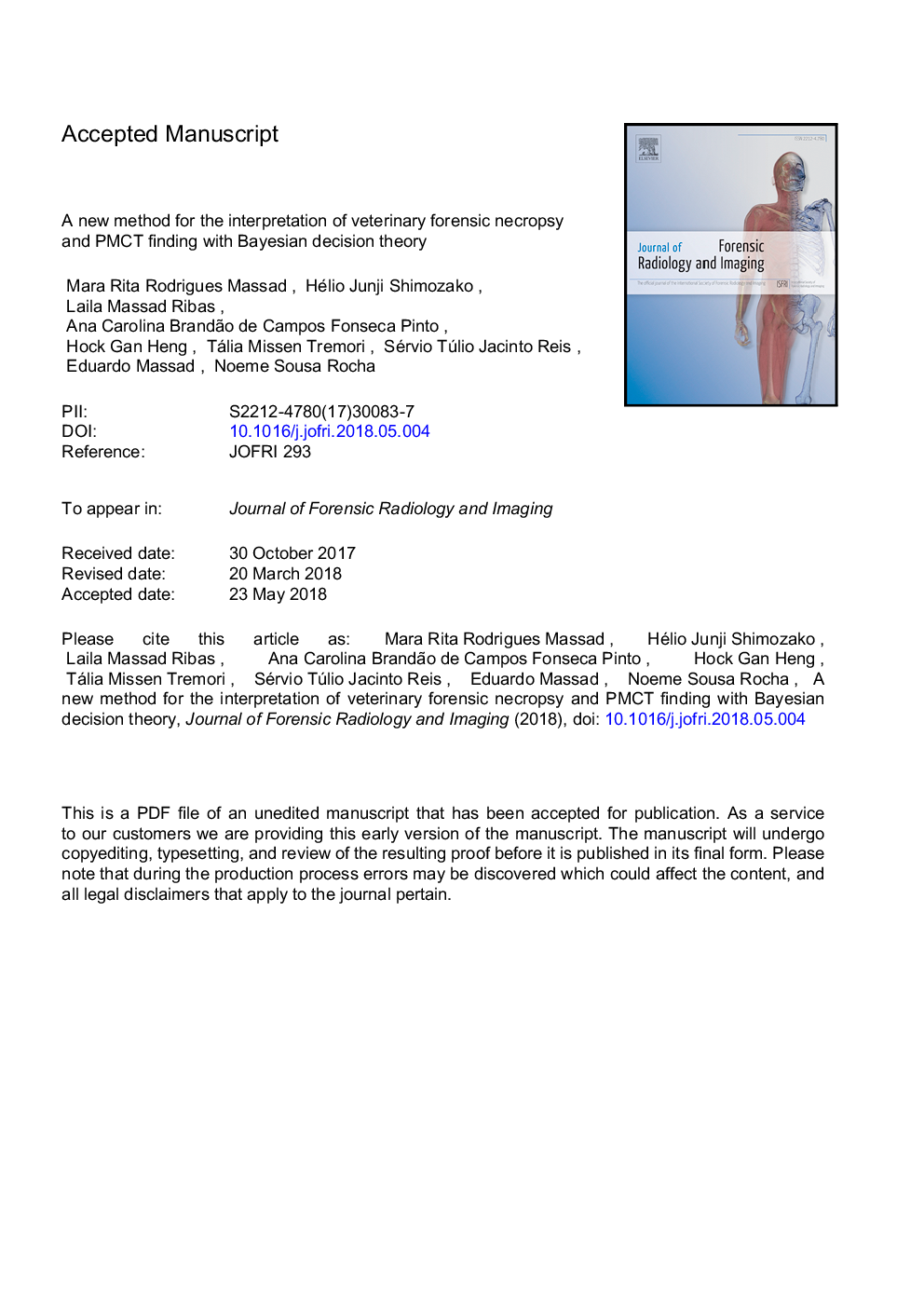| Article ID | Journal | Published Year | Pages | File Type |
|---|---|---|---|---|
| 6555174 | Journal of Forensic Radiology and Imaging | 2018 | 15 Pages |
Abstract
This work proposes a novel approach to estimate the sensitivity of post-mortem computed tomography (PMCT) with respect to traditional necropsy (gold standard). Using concepts of Bayes theorem and the opinion of 57 veterinarians of how a relevant finding (RF) on PMCT or at necropsy can be a determinant in the animal's death, the general sensitivity was estimated. Such sensitivity can be interpreted as the probability to identify a specific RF in a necropsied animal. In the study, we included 18 animals that were subjected to traditional necropsy and underwent PMCT, which provided 48 different findings; all were assumed as a potential cause of death. This study aimed to understand the probability of death, given that a necropsied animal presented a specific RF. To estimate all contributions of the 48 RF, we designed a simple survey based on the Delphi method. In this survey, we invited veterinarians to evaluate the 48 NF and to assign a grade in a Likert scale from 0 to 10 for each of the RFs. In this scale, 0 (zero) indicates that the NF does not contribute to the animal's death, and 10 (ten) indicates that this NFdoes totally contributes to the animal's death. Therefore, each veterinarian, according to their own professional experience, assigns a grade describing how important each necroscopic finding is to the animal's death. Our results demonstrated that the problem of sensitivity analysis in the absence of a gold standard could be circumvented by the method proposed here.
Related Topics
Health Sciences
Medicine and Dentistry
Forensic Medicine
Authors
Mara Rita Rodrigues Massad, Hélio Junji Shimozako, Laila Massad Ribas, Ana Carolina Brandão de Campos Fonseca Pinto, Hock Gan Heng, Tália Missen Tremori, Sérvio Túlio Jacinto Reis, Eduardo Massad, Noeme Sousa Rocha,
